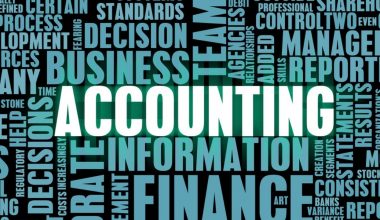Self-employed people, like all other citizens of the country, are obligated to pay federal income tax. Meanwhile, self-employed people who want to file their yearly income tax have a hurdle because their paycheck never correlates to their complete earnings. This is due to the fact that they neglect to keep track of their own income, estimate how much tax they owe, and in most cases, make estimated tax payments throughout the year. However, this article explains more on the self employed tax rates and how you can calculate and file for your income tax.
Self Employed Income Tax
Social Security and Medicare taxes make up the self employed tax, which is mostly levied on people who work for themselves. It is comparable to the Social Security and Medicare taxes that are deducted from most wage employees’ paychecks.
Most wage earners’ Social Security and Medicare taxes are calculated by their employers. Self employment tax (SE tax) is calculated by the taxpayer themselves utilizing Schedule SE (Form 1040 or 1040-SR). In calculating your adjusted gross income, you can also deduct the employer-equivalent share of your SE tax. Social Security and Medicare taxes cannot be deducted by wage workers.
Who Is Required to Pay Self Employed Income Tax?
If either of the following situations applies, you must submit Schedule SE (Form 1040 or 1040-SR) and pay self employment tax.
- You made $400 or more in net self employment income (not including wages from church employees).
- You earned $108.28 or more as a church employee.
self employment tax is often imposed on your net self employment income. As a sole entrepreneur or independent contractor, you typically utilize Schedule C to calculate your net self employment income. Use Schedule SE to calculate your net self employment earnings if you have income that is subject to self employment tax. You often need to calculate your total earnings subject to self employment tax before calculating your net earnings.
Family Caregivers and Self Employment Tax
Workers who provide in-home care for the elderly or the disabled (caregivers) are subject to different restrictions. Because they work in the homes of elderly or disabled people who have the right to tell them what needs to be done, carers are frequently employees of the people for whom they provide services.
How to Pay Self Employment Tax
You need a Social Security number (SSN) or an individual taxpayer identification number (ITIN) in order to pay self employment tax.
Use Form SS-5, Application for a Social Security Card, to submit your application if you’ve never had an SSN. You can obtain this form by calling (800) 772-1213 or visiting any Social Security office.
#2. Obtaining an Individual Taxpayer Identification Number
If you are a nonresident or resident alien, do not have an SSN, and are not qualified to obtain one, the IRS will give you an ITIN. Fill out Form W-7, Application for IRS Individual Taxpayer Identification Number, to request an ITIN.
#3. Paying Self Employment Tax with Estimated Taxes
If you are self employed, you might need to submit estimated tax payments on a quarterly basis. You can pay your self employment tax using these projected tax payments. For more information on paying your self employment tax with estimated taxes, see the Estimated Taxes page and Publication 505, Tax Withholding and Estimated Tax.
How Does Self Employment Tax Work?
The IRS states that if you made $400 or more in net self employment income, you typically have to pay self employment tax. 92.35% of your net self employment income is typically subject to self employment tax. By deducting regular, essential business, or trade expenses from the gross income you received from your trade or business, you can determine net earnings.
You may calculate how much you could owe overall by multiplying 92.35% of your net income earnings by the current self employed tax rate.
How to Avoid or Reduce Self Employment Tax
The thought of handing over an additional 15.3% of their hard-earned money in self employment taxes makes many new business owners shudder. The good news is that you can lower your business’s tax burden.
- Keep track of each company expense. Deductible company expenses will lower your tax burden because self employment taxes are applied to net profits rather than your gross income. Make sure to keep track of all tax deductions and benefit from any prospective tax credits. You might be surprised by some deductions, such a home office or health insurance.
- Take a deduction above the line. As an above-the-line deduction, the tax code permits self employed individuals to write off half of their total self employment tax. This deduction corresponds to the employer portion of Social Security and Medicare that your boss would be responsible for covering if you were an independent contractor. Divide the amount of self employment tax you computed in half. Line 15 of Schedule 1 which is an attachment to your Form 1040 contains the outcome.
- Decide on an S-corp. By choosing to have their LLC taxed like an S corporation, some LLC members can lower their self employment tax obligation. The reason for this is that whereas LLC members pay self employment taxes on 100% of their share of the income of the LLC, S corp owners only pay Social Security and Medicare taxes on their wage. Making an S corp election, however, is not appropriate for everyone. Consult a tax expert to evaluate if it’s the best course of action for you.
Self Employed Income Tax Rate
In addition to 12.4% for Social Security and 2.9% for Medicare, the self employment tax rate is 15.3%. However, only a portion of your business revenue may be covered by the Social Security portion. The Social Security wage foundation is to blame for it.
Social Security’s pay base is $147,000 for 2022 and $160,200 for 2023. This indicates that in 2022, the Social Security tax will only be levied on the first $147,000 of your wage and self employment income. After that, no further Social Security tax is imposed on you. The Medicare part of the self employment tax has no upper limit. The Medicare tax, therefore, applies to all of your wages and self employment income, regardless of how much you make.
Consider the scenario where you work a full-time job and earn $150,000 in the tax year. Making personalized party cakes is another side business of yours that earns you an additional $20,000 annually. Your company deducts Social Security taxes from your salary of $147,000 in 2022. You would not be required to pay the 12.4% Social Security component of self employment taxes on your side hustle income because you have already achieved the Social Security salary base. Only the 2.9% Medicare share of self employment tax would be due from you.
Self Employment Tax Rate: How much should taxpayers estimate paying?
The self employment tax rate as of right now is 15.3%. This portion is divided between taxes that fund Social Security and taxes that fund Medicare.
A self employed person is subject to both employer and employee taxes. Employees and employers pay Social Security taxes at a rate of 6.2%, while self employed individuals pay double that amount (12.4%). The first $160,200 of net self employment income is subject to Social Security tax in 2023.
#2. Medicare tax
Employees and employers pay Medicare taxes at a rate of 1.45%, which means self employed individuals pay 2.9% in taxes. The totality of your net income is subject to this tax.
When to pay self Employment tax
You must submit Schedule SE together with your Form 1040 by April 15 and pay self employment taxes if your annual self employment income is $400 or more. However, you must submit anticipated quarterly tax payments if you anticipate owing $1,000 or more in combined income tax and self employment taxes.
April 15, June 15, September 15, and January 15 of the following year are typically the dates on which estimated payments are due. If the 15th falls on a weekend or holiday, the dates are moved to the next workday.
self employed taxpayers can use the worksheet on page 8 of Form 1040-ES to estimate how much they must pay and you can use these tax forms to help you calculate your annual income tax liability, split it by four, and also pay it by the above-mentioned due dates in equal monthly installments.
How to File Self Employed Income Tax
Every state has an income tax rate stipulated for both employees and self employed citizens. There are certain things you need to have in mind as a self employed earner when you want to file for income tax. First is to know the self employed tax rate that operates in your state and take into account whether your region has distinct city taxes before you can calculate your tax obligations. Calculate your business’s net profit or loss before determining your rate. This can be calculated by deducting business expenses from business revenue. The difference, known as net profit, is a portion of your revenue if your expenses are lower than your income. Your net loss is the amount remaining after expenses exceed income.
As being self employed you must first comprehend your income tax rate and any potential state and local taxes before you can prepare to file your taxes. You must first calculate your net profit or loss for the taxable period in order to estimate your tax rate.
Next, you must submit a Schedule C (Form 1040) if your self employment income exceeds $400. Though you meet any of the other criteria specified in Form 1040, you must still submit a tax return online even if your net self employment earnings were less than $400
The IRS mandates that self employed taxpayers make four anticipated tax payments throughout the year if they anticipate owing more than $1,000 in self employment tax. To file these quarterly taxes, you must use IRS Form 1040. Using free tools like this one from TaxAct, you can calculate your anticipated self employment tax.
How to Calculate Self Employed Income Tax
Although you must pay your income tax, it is best to understand the self employed tax rate operating in your state to enable you to determine the amount to pay. you owe may be lower than you anticipate. Your whole net income is just 92.35 percent subject to self employment tax. Your tax base is referred to as this.
Let’s imagine you are a single person and your self employment net earnings in 2023 total $70,000. To figure out your self employment taxes, follow these steps:
- Establish your tax base for self-employment. To determine your tax base, multiply your net earnings by 92.35% (0.9235): $70,000 x 92.35% = $64,645
- Make a self employment tax calculation. Add the self employment tax rate to your tax base: $64,645 x 15.3% (0.153) = $9,890.69. Because your net income is less than $200,000, there is no additional Medicare tax.
To compute your self employment tax, utilize Schedule SE. It’s crucial to accurately fill out the form and include it with your federal income tax return. Your can determine your benefits by the Social Security Administration using data from Schedule SE. The best tax preparation software for independent contractors will fill out the form for you.
What Is the Standard Deduction for Self Employed?
The standard deduction is a tax write-off available to all Americans. Here’s what it’s worth in 2022: $12,950 for single filers and spouses filing separately. $25,900 if married filing jointly.
What Is 20% Self-Employment Tax Deduction?
The deduction lets qualifying taxpayers to deduct up to 20% of their QBI, as well as 20% of qualified REIT dividends and qualified publicly traded partnership (PTP) income.
Can You Deduct 50% Of Self-Employment Tax?
You can deduct one-half of the self-employment tax when calculating your adjusted gross income on Form 1040 or Form 1040-SR. Schedule SE (attach Schedule 1 (Form 1040), Additional Income and Adjustments to IncomePDF) is where you calculate this deduction.
Why Is Self-Employment Tax So High?
Because employers are required to pay half of their workers’ Social Security and Medicare taxes, the self-employment tax is higher than the taxes you pay when you work for someone else. Since you work for yourself, you have to pay the whole amount yourself.
Is Being Self-Employed Worth It for Taxes?
Self-employed people can get tax breaks for business costs that workers can’t get. This can include things like work trips, meals, and business equipment. Even though many companies might pay for these costs and there are tax breaks for people who work from home, self-employed people are in a better position.
Reference
No#1. IRS
#2. Nerdwallet
#4. Forbes






